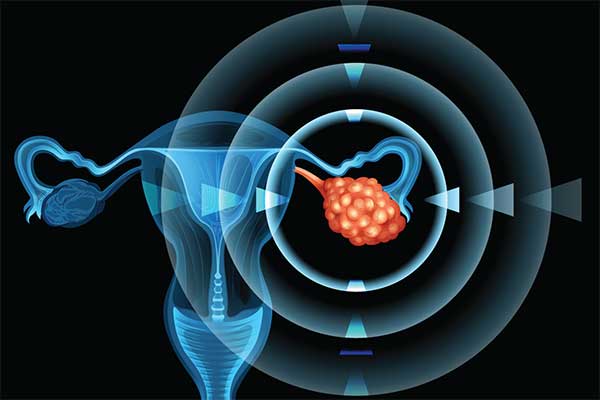By R. Colon-Thillet
Treatment for ovarian cancer across subtypes typically consists of platinum-based chemotherapies. However, this standard therapy is less effective against ovarian clear cell carcinoma (OCCC), a rare subtype of ovarian cancer with distinct pathology and genetic drivers. Advanced OCCC has a poor prognosis, and effective targeted therapies are thus urgently needed. New research from the Kemp lab, now published in the journal Molecular Cancer Therapeutics, identifies BET proteins BRD2 and BRD3 as therapeutic targets for OCCC and describes a synergistic drug combination targeting the BET and PI3K-AKT pathways as a potentially effective therapeutic strategy.
In the study, Shigeta and colleagues first identified potential therapeutic targets for OCCC using a high-throughput siRNA strategy to screen >2,000 genes of interest. They performed the screen in two cell lines, one derived from OCCC and the other derived from a common ovarian cancer subtype known as high-grade serous or endometrioid ovarian carcinoma (HGSC). Comparison of gene candidates from both cell lines allowed the researchers to identify potential subtype-specific targets. More than a hundred genes were identified in each cell line, yet only 20 were shared between both, highlighting distinct functional differences between OCCC and HGSC subtypes.

Gene set enrichment analysis (GSEA) in the siRNA screen hits from the OCCC cell line detected pathways in chromatin or transcription regulation, which led the investigators to hypothesize that OCCC might be more vulnerable than HGSC to epigenetic interventions. In recent years, epigenetic readers such as bromodomain and extraterminal domain (BET) proteins have gained recognition as targets for novel anticancer therapies. BET proteins are epigenetic readers that regulate gene expression and are involved in cancer pathogenesis. In the OCCC screen, BET proteins BRD2 and BRD3 were among the top targets identified. The investigators then knocked down BRD2, BRD3, and BRD4 using pooled or individual siRNAs. They observed a significant reduction in viability in addition OCCC cell cultures, validating the screen results and highlighting the vulnerability of OCCC to BET inhibition.
Recently, BET inhibitors have been clinically evaluated in the context of numerous cancer types but, although some show promise, their effect as a single agent is associated with a low-rate response in clinical trials. This observation led the group to evaluate potential synergistic combination therapies that could enhance BET inhibitors’ effect. By performing BET inhibitor sensitizer drug screens, they identified PIK3-AKT pathway inhibitors as sensitizer drugs. To shed light on the mechanism underlying this synergism, the investigators monitored AKT phosphorylation following treatment with increasing doses of the PIK3-AKT inhibitor in the presence of a BET inhibitor. Their results demonstrated that less PIK3-AKT inhibitor was needed to reduce AKT phosphorylation in the BET inhibitor’s presence, suggesting that BET proteins may directly or indirectly regulate PI3K-AKT signaling.
Using RNA-seq analysis following individual BET protein knockdowns, the group determined that each BET protein has a unique role in gene expression. Furthermore, applying GSEA to the data set revealed that all BET proteins could modify PI3K-AKT signaling and apoptotic sensitivity, congruent with the observed reduction of AKT phosphorylation at lower PIK3-AKT inhibitor concentrations when BET is inhibited.
Accurate models for OCCC are scarce; however, the use of organoids derived from OCCC patient tumors provides a 3D culture model to test novel therapeutics. To evaluate if a synergistic drug approach would be effective in OCCC organoids, the researchers screened organoids derived from multiple patients. BET and PI3K inhibitors were among the top-scoring drugs in the organoids tested, confirming the findings in 2D models and suggesting that BET and PI3K pathway inhibition, alone or in combination, could be an effective therapy for OCCC.
Dr. Chris Kemp, the principal investigator in the study, highlighted the impact of their approach: “The combination of high throughput siRNA and drug screening applied to patient-derived cells and organoids really accelerates our ability to identify and validate new clinically relevant therapeutic options for patients.”
This article was published by Fred Hutch.


